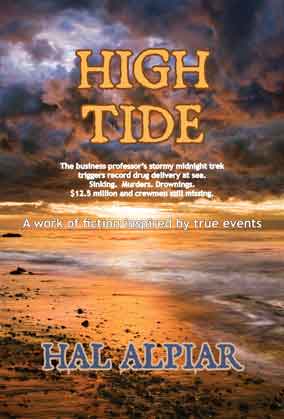Oct 06 2014
THE GETTING-CONSULTING-BUSINESS SECRET
The definition of a consultant: someone from over 100 miles away who jumps hurdles and carries a briefcase—but it’s, oh, so much more!
The Way to Get Consulting
Clients is to BE a Consultant!
• Ask any sales pro! It’s the truth! You want to be a great baseball player? Stop thinking contracts and play baseball! You want to be a great consultant? Stop thinking contracts and BE a consultant!
• Oh, and don’t bust a gut trying to be a lawyer. (Great lawyers are great actors, not great thinkers!) You’ll grow old fast trying to draft a contract for every prospect. Besides, odds are that even if you make the sale, the contract will be broken, which creates the need for lawyers!. [Save contracts for major corporate and airhead government clients.]
• Smart rule of thumb: If a handshake’s not acceptable to a prospect, the prospect’s not acceptable as a client, even (and probably “especially”) when you’re broke!
• Pull-ease: STOP WRITING PROPOSALS! Don’t be a proposalaholic! It NEVER pays! You’ll waste a gazillion hours. Everyone wants a proposal so she or he can decide if you’re worth it, and to use as a guideline for hiring someone else who’s closer or less expensive. Some will take it and follow it and do the work themselves, or hand it off to a staff person to do it in-house. “BAM” (with thanks to Emeril!)…screwed again!
• “Well, I charge for proposals,” a consultant once told me. Seriously? Good luck with that. Yeah, seriously.
• Don’t waste time sending out emails trying to schedule in-person appointments. Just get on the damn phone and make the appointment!.
Okay, now that we’re past the preliminaries, consider this: The only efficient and surefire way to get clients is to start from the very first minute of discussion to serve the decision-maker AS IF YOU WERE ALREADY the consultant. In other words, BE a consultant.
Don’t worry about giving away your services on a first/second visit. Worry about not getting the business because you failed to demonstrate how much value you can contribute (which btw, does not translate into overwhelming your prospects). Focus instead on making pinpoint airstrikes.
Ah, and remember there are always three decision-making entities involved (sometimes one person with three different hats): The CEO, the CFO and the COO, or (depending on your expertise) the VP of Sales and/or marketing. A “sold” CEO may yield to the money-manager. And, the purpose of every first sales call is not to make a sale; it’s to get another sales call!
Great consultants (and great salespeople) listen 80% of the time. They suggest with questions–have you considered…? Great consultants call on practical and directly-related examples of experience or knowledge-base. Great consultants ask for examples and diagrams and opinions, and then weigh it all before offering recommendations.
When you demonstrate your thinking approach and knowledge base, and do it in a passionate but gracious and understanding manner, you are clearing a path for a prospect to experience how you’ll work and what you’re all about right from the git-go. Consider it a “test drive.” Consider how different the consultant model was just five years ago!
Instead of asking endless stupid questions, ask enough to find out the biggest surface problem and make simple, straightforward, practical (but not know-it-all attitude) suggestions. Express these as what you BELIEVE (not “think”) might be the most productive or meaningful or rewarding solution direction (What has the prospect suggested as a goal or pursuit direction?)
Here’s the thing. If you can’t sit on the same side of the table physically, sit on the same side of the table mentally. And you may not like hearing this because you may think it’s “old-fart” stuff, but you should know it is the truth: What all of us buy all of the time is TRUST. So put yourself in the other person’s shoes. Period.
Happy Consulting!
# # #
Hal@BusinessWorks.US or 931.854.0474 or comment below
OPEN MINDS OPEN DOORS
Thanks for visiting. Go for your goals! God Bless You!
Make today a GREAT Day for someone!



